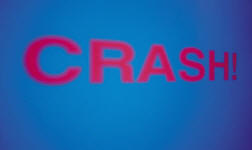| Case Study #1: Weight Loss Goal/Marvin Marvin, your favorite client, comes in to have his body composition
evaluated. You have a few measurements on him to start (each about six weeks
apart) and want to monitor his progress on your recommendations. Here are his
readings, let’s discuss…
Table 11. Marvin’s BIA Test Results*
|
Compartment
|
Reference** |
Reading 1 |
Reading 2 |
Reading 3 |
|
Weight |
148 (IBW) |
200
AOW = 161 |
190
AOW = 158.5 |
190
AOW = 158.5 |
|
Body cell mass |
57.7-66.6 |
Actual (goal)
72.5 (62.8-72.5) |
Actual (goal)
66.5 (61.8-71.3) |
Actual (goal)
71 (61.8-71.3) |
|
Extracellular mass |
59-66.6 |
Actual (goal) 80 (78-90) |
Actual (goal)
80 (74.1-85.5) |
Actual (goal)
80 (74.1-85.5) |
|
Fat |
14.8-32.6 |
Actual (goal)
47.5 (20-40) |
Actual (goal)
43.5 (19-41.8) |
Actual (goal)
39 (19-41.8) |
* in pounds; **values based on Marvin’s sex, height (67
inches), and weight
IBW = ideal body weight; AOW = adjusted obese weight [link to
AOW section in text]
 |
Marvin may be overweight, but he is a pretty muscular guy.
His BCM weighs in at 45% of his adjusted obese weight (AOW), at the top end
of the expected range. Marvin decides he wants to lose a little weight to
look the buff guy he is under the extra fat tissue. In Marvin’s case, you
recommended reasonable calorie levels and continued exercise. |
| Your hope is that
his weight loss will be mostly fat. In exercise-induced weight loss,
typically much slower than diet-induced weight loss because of maintenance
and improvement of muscle tissue, you expect an 80-20 split between fat and
lean tissues. Calorie deprivation may change that ratio a bit, so you
minimize the emphasis on that aspect of weight loss. In checking up on him
you find that he has, in fact, lost about 10 pounds, 6 of which are from the
fat compartment. You might suspect that the weight was lost primarily due
to calorie changes. He still has a good buffer of lean tissues, so you
remind him of his exercise goals to improve the type of weight loss. |
 |
About six weeks later, Marvin is complaining that he has not
lost more weight!! After your evaluation, you discover that he has, indeed
lost fat and his pants are even looser than the last time you saw him.
Exercise appears to be doing its job to maintain his muscle tissue, so he
may be able to support some calorie deprivation. |
| It looks like he will do pretty well, so you
might recommend that he get regular check-ups, maybe once every 3 months or
so to keep him on his toes and once he gets close to his goals, set the man
free!! |
Case Study #2: Achieving Pre-Disease Weight/Jean
Jean was always pretty healthy and quite
athletic prior to being diagnosed with breast cancer. She is trying to gain
weight back after a bout of chemotherapy as a follow-up to mastectomy. The
first time you saw Jean was after surgery and she was pretty weak. Exercise was
pretty much out of the question. Jean insists, “Things have to get better!”
So, you are set to help her to become very aggressive about regaining weight.
Table 12 shows Jean’s readings.
Table 12. Jean’s BIA Test Results
|
Compartment
|
Reference** |
Reading 1 |
Reading 2 |
Reading 3 |
|
Weight |
130 (IBW) |
115 |
110 |
120 |
|
Body cell mass |
39.0-46.8 |
36 |
34 |
40 |
|
Extracellular mass |
48.1-57.2 |
60 |
58 |
56 |
|
Fat |
26-41.6 |
19 |
18 |
24 |
* in pounds; **values based on Jean’s sex, height (66 inches),
and weight
IBW = ideal body weight
| |
You can see that in the first reading Jean’s BCM may have
already been compromised. If we want to make the change even more glaring ,
you could calculate that she was down 8% of BCM from the lower end of
optimal. The fact that she lost some fat suggested a calorie balance issue.
Fluid in ECM was higher, suggesting a stress response. |
| Appropriate
guidelines would suggest strategies to specifically address the problems at
hand, support the chemotherapy cycles, and prevent any nutrition-related
problems that may further compromise Jean’s health. If we surmise that
starvation (calorie imbalance) is one issue and the stress response from
chemotherapy assaults is another, then we can work on the nutritional
management reverse starvation and to reduce the detrimental effects of
stress responses related to chemotherapy. |
 |
Jean started on an aggressive plan to improve nutrient
intake and minimize symptoms. Jean’s well-matched plan of action should
yield some specific outcomes: improved BCM and fat volume, and appropriately
reduced ECM. At her next appointment, you noted that she looked better and
she noted that she felt better. |
| While Jean worked hard to make up for lost
ground, you continued to monitor her progress. Her last reading showed that
her weight gain was an especially good one, with normalization of BCM (up)
and ECM (down). Her fat compartment improved, but didn’t overshadow her
gain in muscle tissues. Jean said she is “psyched” and will continue to be
proactive about maintenance of her health. |
Case Study #3: The Long-Term Survivor/Jeffrey
Jeffrey is a long-term HIV disease survivor who you have seen through
many ups and downs (including multiple episodes of wasting) over his 12-year
diagnosis. He has always been a slim man, but has gained quite a bit of
weight. He told you, “It is getting out of control!” He was dismayed that
he used to be able to eat anything and was feeling like he needed a very
restrictive diet to return to his usual svelte form. Because you have
followed him for a long time, you had BIA readings at an asymptomatic
baseline, prior to his multiple episodes of wasting.
Table 13. Jeffrey’s BIA Test Results
|
Compartment* |
Reading 1 |
Reading 2 |
Reading 3 |
Reading 4 |
|
Weight |
140 |
120 |
160 |
150 |
|
Body cell mass |
Actual (goal)**
60 (54.6-63) |
50 |
72 |
68 |
|
Extracellular mass |
Actual (goal)
60 (54.6-63) |
Actual (goal)
70 (46.8-54) |
Actual (goal)
65 (62.4-72) |
Actual (goal)
62 (60.5-69.8) |
|
Fat |
Actual (goal)
20 (14-30.8) |
Actual (goal)
10 (12-26.4) |
Actual (goal)
23 (16.35.2) |
Actual (goal)
20 (15-33) |
* in pounds; **values based on Jeffrey’s sex, height (68
inches), and weight
IBW = ideal body weight
 |
Jeffrey’s first reading reflected his baseline and what
he felt were pretty good levels for him. His second reading reflects
one of his wasting episodes during infection with reduced BCM and fat
while ECM was elevated. If 5% total weight loss is associated with
increased morbidity and mortality in HIV disease, then you can imagine
how detrimental it is to lose even 5% of the body’s important BCM
stores. |
| Jeffrey’s wasting was in the severe
category for BCM (more than 8% down!). Fluids shifted up, as is normal
in infection or injury. He lost his appetite and was not taking in
enough calories to sustain his fat level, either. He was weak and
having repeated episodes of infection. To shore him up, the health care
team agreed that an appetite stimulant and an anabolic medication would
help. You instructed Jeffrey about the importance of nutrient intake to
enhance the medications and send him down the hall to the physical
therapist to obtain an evaluation and exercise prescription with his
weakness and physical limitations in mind. |
 |
You monitored Jeffrey carefully over the next three
months and he improved to the levels you see in Reading 3. Jeffrey took
all of your advice to heart and wanted to have and maintain a buffer of
weight, preferably as BCM. As his weight returned to usual levels the
appetite stimulant was discontinued. Once his weight was at 20 pounds
above usual, you noted that 12 of those pounds were in additional BCM. |
| Jeffrey then cycled off of the anabolic
medication. With exercise and continued work on his diet, he held
pretty steady at 150 pounds and an enhanced level of BCM. You decided
it was worthwhile to maintain a regularly scheduled visit with Jeffrey
every few months to keep him motivated. |
Reimbursement Issues Which code(s) to use in order to obtain payment for services.
Appendices Contains downloadable spreadsheets (MS Excel) and reports (MS
Word)
Resources and References Where to find additional information
*Disclaimer: All photos in the case studies are for
representative purposes only and do not reflect the actual persons
described.
|
|




